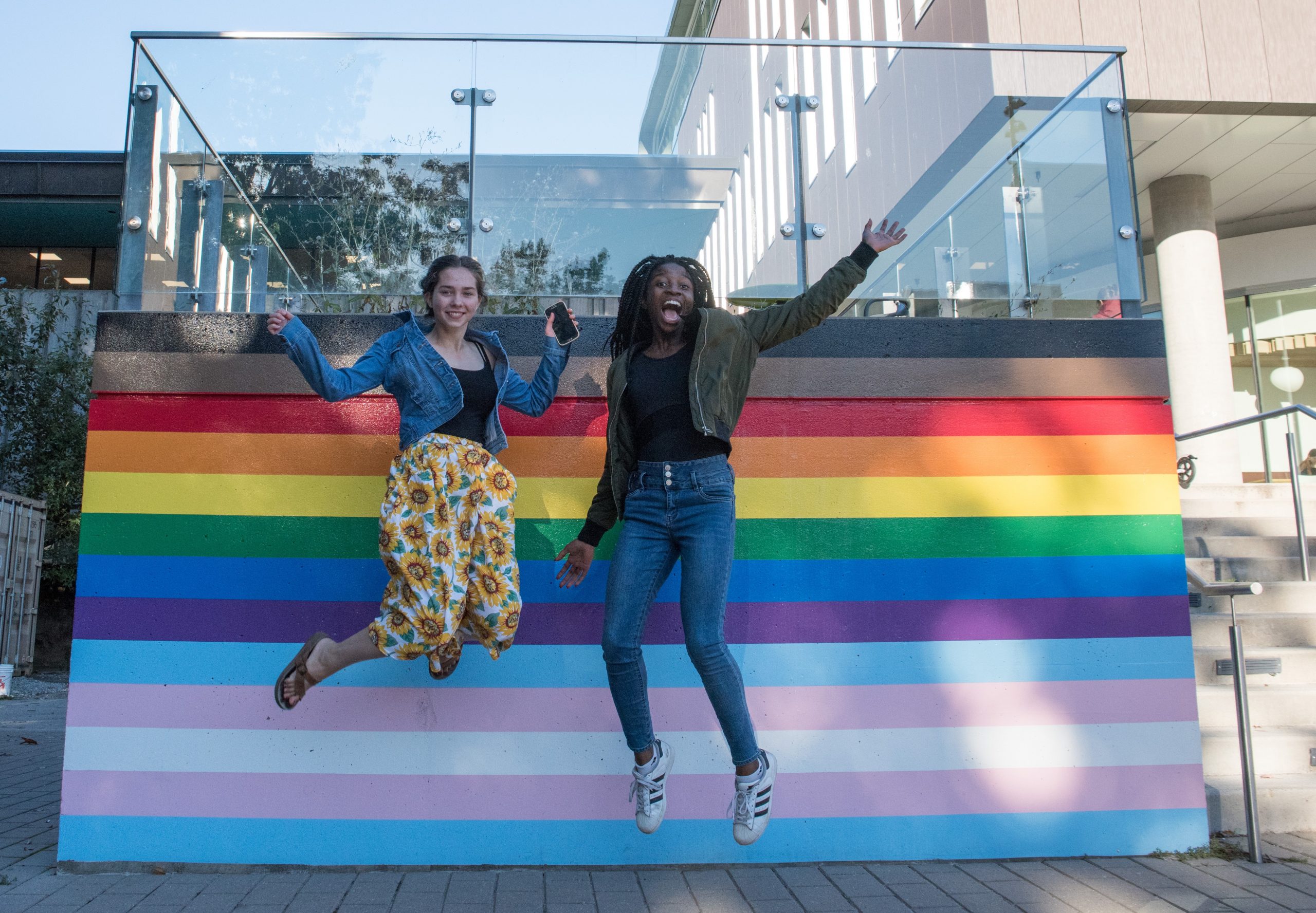
UBC Sex and Gender Inclusivity Canvas site:
Check out the Sex and Gender Inclusivity Canvas site to learn more about how you can create inclusive learning environments for sex and gender diverse students in your courses. This Canvas site was co-created by students, faculty, and staff within the UBC Faculty of Science and includes key definitions/concepts, frequently asked questions, teaching materials, resources, and articles.
Resources for building diverse examples into biology courses:
- Project Biodiversify: https://projectbiodiversify.org/sex/
- List and bios of hundreds of scientists who identify as queer (mostly from the U.S.): https://500queerscientists.com/
- Spotlight on diverse scientists assignment in BIOL 336: https://blogs.ubc.ca/bionews/2022/03/02/teaching-spotlight-getting-to-know-diverse-scientists-in-biol-336/
- Roughgarden, J. (2004). Evolution’s rainbow: Diversity, gender, and sexuality in nature and people. Berkeley: University of California Press: https://teoriaevolutiva.files.wordpress.com/2013/10/joan_roughgarden_evolutions_rainbow_diversitybookos-org1.pdf
- Bachtrog, D., Mank, J. E., Peichel, C. L., Kirkpatrick, M., Otto, S. P., Ashman, T. L., Hahn, M. W., Kitano, J., Mayrose, I., Ming, R., Perrin, N., Ross, L., Valenzuela, N., Vamosi, J. C., & Tree of Sex Consortium (2014). Sex determination: why so many ways of doing it?. PLoS biology, 12(7), e1001899: https://journals.plos.org/plosbiology/article/file?id=10.1371/journal.pbio.1001899&type=printable
- Griffiths, Paul E. (2021) What are biological sexes? [Preprint]: http://philsci-archive.pitt.edu/id/eprint/19906
Resources for addressing sex and gender in biology courses:
- Sample Sex and Gender Acknowledgement (modifiable): https://wiki.ubc.ca/File:Sex_and_Gender_Acknowledgement.pdf
- Spotlight on adding a sex and gender acknowledgement in BIOL 371: https://blogs.ubc.ca/bionews/2022/08/18/teaching-spotlight-adding-a-sex-gender-acknowledgement-in-biol-371/
- Mercer-Mapstone, L., Bajan, S., Banas, K., Morphett, A., and McGrath, K. (2021). Breaking the Binary: Teaching Inclusive Conceptions of Sex and Gender in Undergraduate Science. Teaching & Learning Inquiry, 9(2): http://dx.doi.org/10.20343/teachlearninqu.9.2.6 (Note: Pam Kalas received access to all the teaching materials mentioned in the article; authors have some conditions for use – please get in touch if interested in seeing/using them)
- Gender unicorn: https://transstudent.org/gender/
- Stuhlsatz, M.A.M., Buck Bracey, Z.E. & Donovan, B.M. (2020). Investigating Conflation of Sex and Gender Language in Student Writing About Genetics. Sci & Educ, 29, 1567–1594: https://doi.org/10.1007/s11191-020-00177-9
Resources for making biology courses more welcoming and inclusive for sex and gender diverse students:
- How to Support Gender and Sexually Diverse Students in UBC Biology courses (student-generated recommendations): https://blogs.ubc.ca/bionews/2021/12/01/how-to-support-2slgbtqia-students-in-the-biology-classroom/
- Examples of inclusive language in biology: https://www.genderinclusivebiology.com/bettersciencelanguage
- Cooper, K. M., et al. (2020). Fourteen Recommendations to Create a More Inclusive Environment for LGBTQ+ Individuals in Academic Biology. CBE–Life Sciences Education, 19(3), es6: https://doi.org/10.1187/cbe.20-04-0062
- Hales K. G. (2020). Signaling Inclusivity in Undergraduate Biology Courses through Deliberate Framing of Genetics Topics Relevant to Gender Identity, Disability, and Race. CBE–Life Sciences Education, 19(2), es2: https://doi.org/10.1187/cbe.19-08-0156
- Zemenick, A.T., Turney, S., Webster, A.J., Jones, S.C., Weber, M.G. (2022). Six Principles for Embracing Gender and Sexual Diversity in Postsecondary Biology Classrooms, BioScience, 72(5), 481–492: https://doi.org/10.1093/biosci/biac013
Non biology-specific resources for making the classroom more welcoming and inclusive for sex and gender diverse students:
- Pronouns at UBC: https://equity.ubc.ca/resources/gender-diversity/pronouns/
- Names at UBC: https://equity.ubc.ca/resources/gender-diversity/names/
- UBC Positive Space terminology (extensive): https://equity.ubc.ca/resources/positive-space/positive-space-language/
- Trans-inclusive classrooms: https://ctlt-inclusiveteaching.sites.olt.ubc.ca/files/2020/01/transinclusive-classrooms_v2.pdf
- UBC “Positive Space: Foundations” course: https://wpl.ubc.ca/browse/equity-and-inclusion/courses/wpl-eio-psfn
Some practical tips:
Apologizing after misgendering someone/using the wrong pronouns:
- Correct yourself, apologize, move on.
- Don’t make it about yourself, center the harm/person who was harmed.
- Don’t put the person who was harmed in a position where they have to comfort you, or where
they feel they are inconveniencing you. - Don’t comment on “how hard it is to get it right” or anything of the sort.
- Avoid repeating the mistake.
Respectfully asking for someone’s pronouns:
- Introduce yourself and share your pronouns first.
- Most likely, the other person will also share their pronouns.
- If this is not the case, you can ask “What pronouns should I use to refer to you?”
- Make it clear you just want to be respectful.
- Don’t assume pronouns/gender based on how someone looks.
- Don’t only ask people whose gender you’re confused about for their pronouns, ask everyone. This way, we avoid:
- Accidentally misgendering someone;
- Singling out people whose gender expression is non-conforming.
Resource list curated by Nafeesa Alibhai, Kenzie Arnott, Pam Kalas, and Lucía A. Quesada-Ramirez,